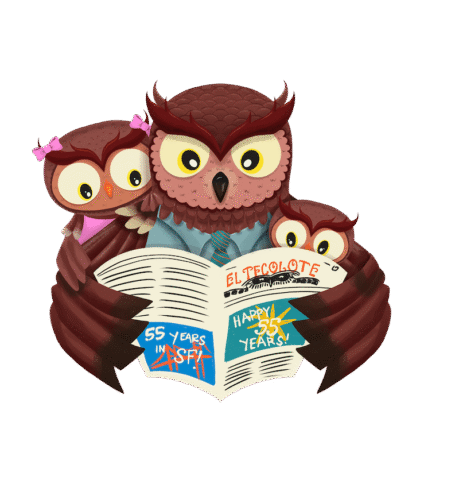
Berkeley-based artist Julio Salgado roots his illustrations in his Undocumented Queer identity. His work can be found in the form of videos, books and illustrations.
Salgados’ bold statements have left footprints in a time marked by increasing demand for immigration reform.
Since 2010, Salgado’s art has gone viral. He creates illustrations that draw from photos of individuals facing deportation or detention and uses them for online campaigns. These illustrations are often of DREAMers—undocumented students pursuing higher education—a group to which Salgado can count himself. His art reflects demands for, by and about undocumented youth.
Salgado’s work has been featured at SOMArts cultural center, and at Yerba Buena Center for the Arts. His most recent installation is a digital billboard at Galería de la Raza in the Mission District.
El Tecolote decided to interview Salgado to celebrate June as National Gay Pride month; Undocuqueer style.
You co-founded Dreamers Adrift (dreamersadrift.org) with three fellow young undocumented artists—what inspired you?
Dreamers Adrift… was a response to how the media was portraying undocumented students and how we were told we were criminals. (The year) 2010 was the year students were coming out of the shadows, doing sit-ins and getting arrested protesting SB-170 in Arizona. Coming out as undocumented and queer… they were changing that narrative and taking charge. As creative people we needed to document this in our own words.
What does owning an undocumented and queer identity mean to you?
For me, it’s about using those identities that are supposed to make me weak [to] empower myself and be like ‘fuck you. I don’t care what you think, I’m going to be me.’
When was the first time you recognized your passion for art?
(When) I took my first art class, I discovered the work of Frida Kahlo … and I saw the way Frida was able to convey emotion and pain, and at the same time there was a ‘not give a fuck-ness about it’… When you’re in seventh grade, chubby, gay and confused about life, and you see shit like that— you’re drawn to that.
You were studying Journalism at Cal State Long Beach…
I was doing daily newspaper, hanging out with people from La Raza and exploring my identity. I started learning about politics and we started a zine called “El Reflejo.” We were writing about the intersectionalities of being queer and undocumented, but I was in the closet because the entries were anonymous.
Was there any barrier that kept you from being open about being queer?
I didn’t get politicized about being queer until a couple of years ago. In my family, I have a gay uncle and he is like a gay of the 80’s. He’s got AIDS, so I saw my uncle in bed sickmany times… I remember being 14 or 15, going to the hospital and seeing him in the ER—I always felt that was going to happen to me, that’s what happens when you’re gay: you die.
Last year your “Illustrations for Papers: Stories by Undocumented Youth” was published. How did that project reach fruition?
In late 2009 Papers the documentary came out and the director, Anne Galisky, hit me up and said, ‘only five stories made it into the documentary, would you be interested in illustrating the stories?’ So I would read the stories (transcriptions of the book) and purposely didn’t want to know what the people would look like… sometimes I would draw the people and they looked like that in real life. Later it was really dope meeting people I felt like I met.”
Is there any recommendation you have about success in art and activism?
If you’re good at something you should focus on that and make sure you put the water in the seed! Even if you have to do something else, like I made burritos for five years (during and after college) but afterwards I would always draw. People shouldn’t give up at what they’re good at.


